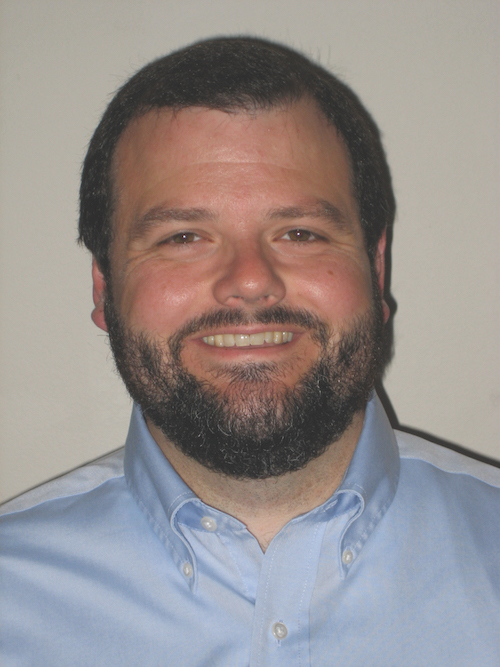Michael Roberts, Ph.D.
Meet the Researcher
Roberts received his Ph.D. in cell and molecular biology at the University of Texas at Austin, where he also did postdoctoral work, along with at Oregon Health & Science University. He is now an assistant professor at the Kresge Hearing Research Institute at the University of Michigan. Roberts’ 2017 Emerging Research Grant is generously funded by The Barbara Epstein Foundation Inc.
Hearing with two ears, or binaural hearing, is important for our ability to localize sounds and to follow speech in noisy environments. The auditory midbrain is a major site for binaural integration, but the neurons and neural circuits responsible for this integration are largely unknown. My lab works with genetically engineered mice with fluorescent-tagged neurons to understand how neural circuits in the auditory midbrain combine information from the left and right auditory pathways to support binaural hearing. We are also investigating how these circuits can be manipulated to improve binaural hearing for those with hearing loss.
As a child, I found it curious that my grandparents would turn their hearing aids off as soon as we entered a restaurant. This meant that they could hardly hear what my sister and I said. Now, as an auditory neuroscientist, I understand that their hearing aids were amplifying background noise along
with our voices. My interest in figuring out how the brain uses sound localization cues to separate desirable signals from noise is in part motivated by those early experiences.
My father worked for IBM, so we were fortunate to have an early PC in our house at a time when very few households had a computer. I spent hours learning to program in BASIC. I still enjoy solving problems by writing programs, which is a skill that has been very helpful in my research.
In high school my interests shifted toward biology and I became interested in understanding how the brain works. In college at the University of Chicago, I was fortunate to find a position in a neuroscience lab with an excellent and patient mentor, Khaled Houamed, Ph.D. He taught me how to
perform patch clamp electrophysiology—a research approach that makes it possible to record and manipulate the electrical activity of individual neurons. I was hooked and spent every moment I could in the lab.
My wife and I like to joke that we are road warriors. We enjoy road trips and can drive for 12 hours without thinking anything of it. We’re having a great time exploring our new home state of Michigan and visiting the Great Lakes. I also enjoy fly fishing—standing waist-deep in a roaring river is a
tremendous way to interact with nature.
Michael Roberts, Ph.D.’s grant is generously funded by The Barbara Epstein Foundation Inc.
Click to download a PDF of Dr. Roberts's Meet the Researcher profile.
The Research
University of Michigan
Cellular and synaptic basis of binaural gain control through the commissure of the inferior colliculus
Deficits in binaural hearing make it difficult for users of cochlear implants and hearing aids to localize sounds and follow speech in everyday situations. One of the most important sites for binaural computations is the inferior colliculus (IC). Located in the auditory midbrain, the IC is the hub of the central auditory system, receiving most of the ascending output of the auditory brainstem and much of the descending output of the auditory cortex. The left and right lobes of the IC communicate with each other through a massive connection called the commissure. Recent data from in vivo recordings show that commissural projections shape how IC neurons encode sound location. This suggests that important binaural interactions arise through the IC commissure, but the cellular and synaptic basis of these interactions are largely unknown. Understanding these interactions will provide foundational knowledge to guide future efforts to restore binaural hearing.
Long-term goal: To understand the fundamental mechanisms for binaural processing in the auditory midbrain and how these mechanisms are affected by hearing loss, hearing aids, and cochlear implants. To use knowledge of these mechanisms to guide advances in the design of auditory prostheses and improve the ability of device users to understand speech in noisy environments.


